Why you can trust Tom's Hardware
Of the VG28U’s picture modes, Cinema offers the most control, but Racing, the default, is closest to standard out of the box. Aside from a warm grayscale, it has spot-on gamma and excellent color gamut accuracy.
Grayscale and Gamma Tracking
Our grayscale and gamma tests use Calman calibration software from Portrait Displays. We describe our grayscale and gamma tests in detail here.
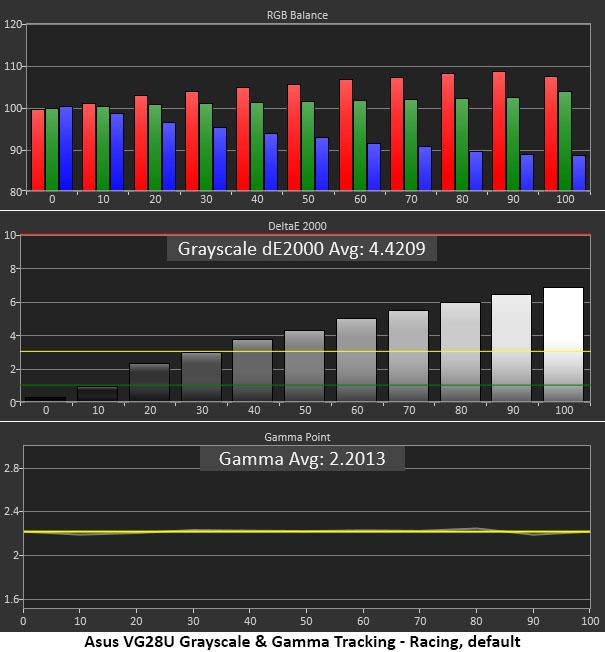
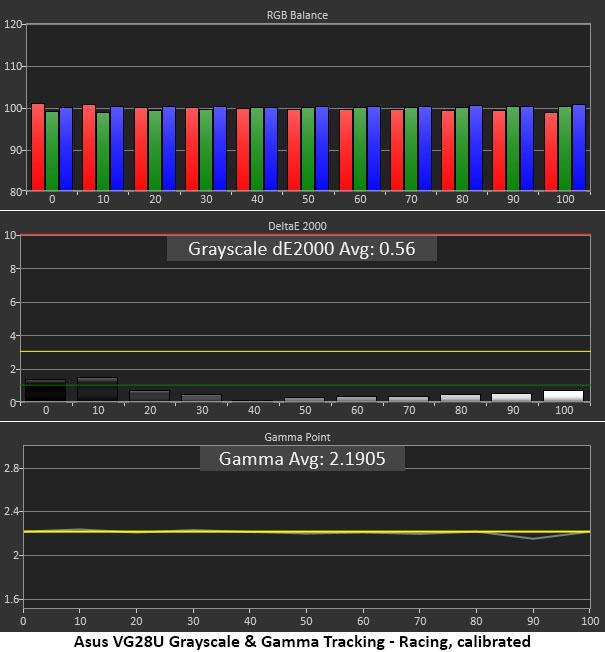

Racing mode sets the color temp to User by default, and that comes out a bit warm in tone. Though both red and green levels are higher than blue, the picture looks a bit too red. You can use the VG28U this way, but the picture will be a little murky. On the other hand, gamma is at the reference level with no visible errors and barely any deviation from the 2.2 line.
With calibration, grayscale tracking becomes visually perfect with no errors of consequence. Gamma is unchanged except for a tiny dip at 90%, an invisible error. The VG28U delivers excellent accuracy with calibration.
If you prefer to use sRGB color for SDR content, that mode is available and relatively accurate. You can see a very slight red error in the 70-100% range but this is barely noticeable. Gamma is right on the 2.2 line as well. This is excellent performance.
Comparisons
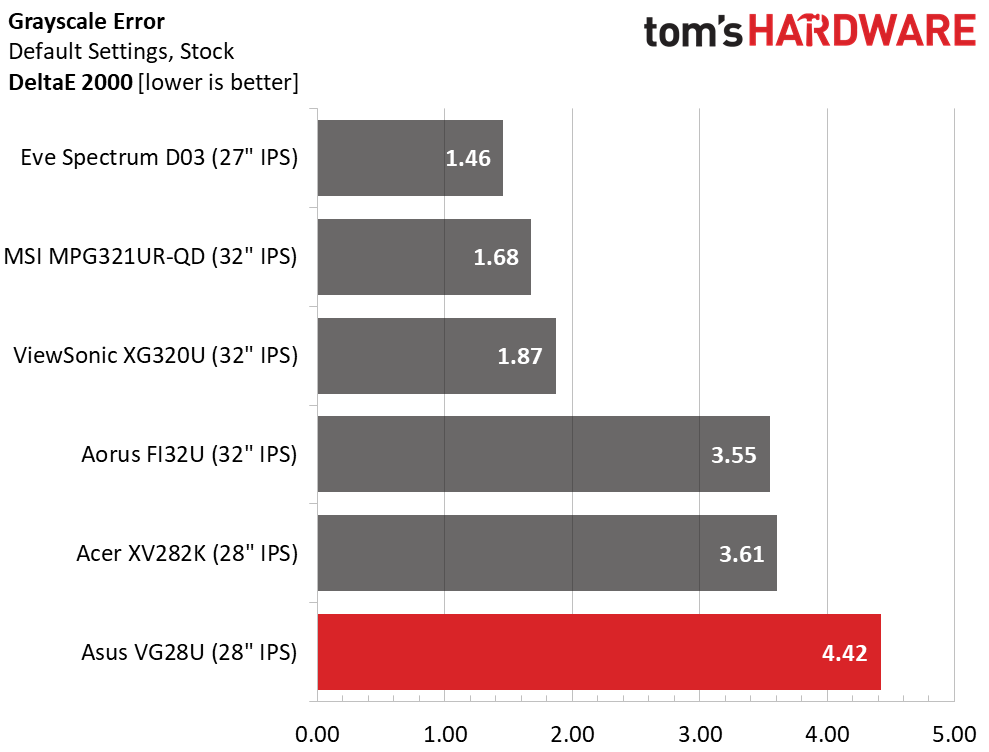
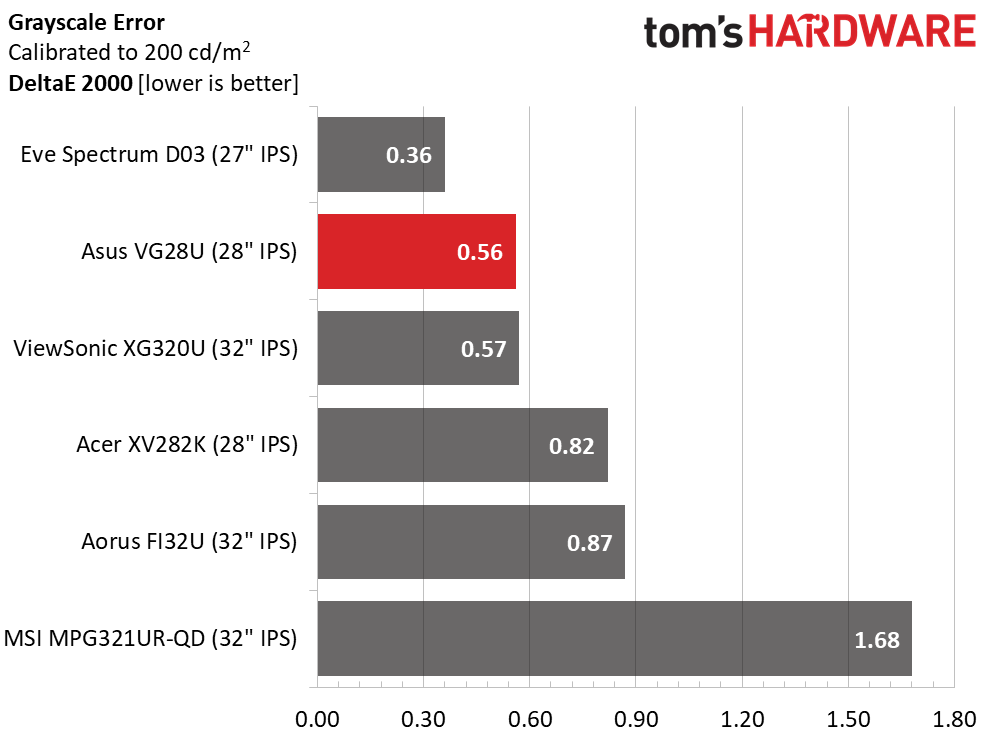


Left at its default settings, the VG28U should be calibrated. Though it looks OK without adjustment, its status as a premium screen raises expectations. A default score of 4.42dE is slightly higher than this genre's average. It should be noted that the grayscale value in sRGB mode is better at 2.55dE. It does not need calibration, which is good because no adjustments are available in that mode.
Calibration levels the playing field nicely, leaving only the MSI over 1dE. The VG28U’s 0.56dE score is at reference level.
Get Tom's Hardware's best news and in-depth reviews, straight to your inbox.
Gamma tracking is perfect whether you calibrate or not. With a tiny 0.08 range of values and a mere 0.45% deviation from 2.2, it scores in the highest tier of all the monitors I’ve tested.
Color Gamut Accuracy
Our color gamut and volume testing use Portrait Displays’ Calman software. For details on our color gamut testing and volume calculations, click here.
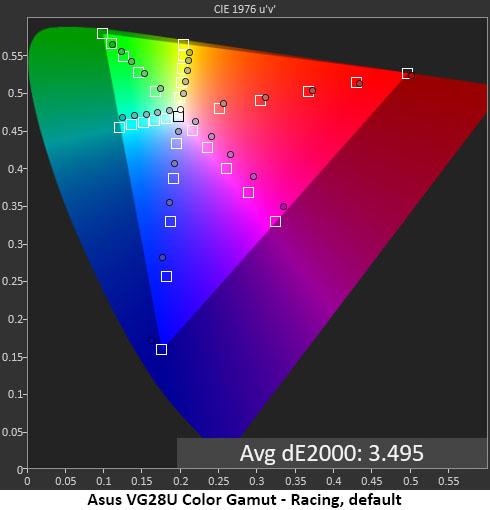
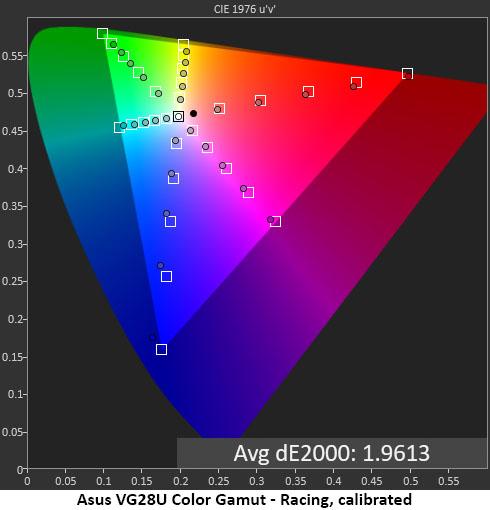
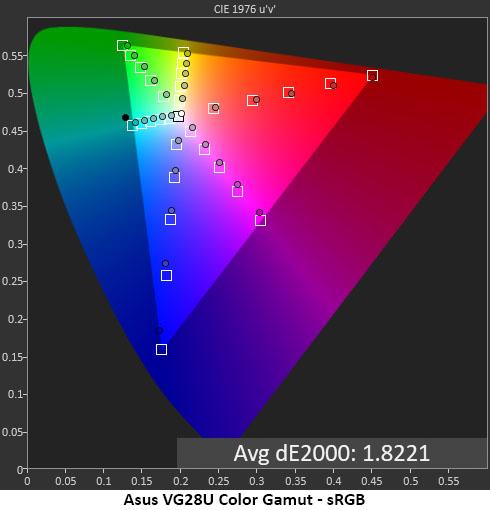
Like most Ultra HD gaming monitors, the VG28U uses its wide color gamut for all content by default. Without calibration, saturation levels are on target for red with some slight under-saturation in green and blue. The green values are typical of extended color displays. Most of them come up a little short in the green primary. The warm grayscale tracking pulls secondary hues off their targets. An out-of-box average of 3.5dE is a fair result.
Calibration makes a significant difference visually and in measured performance. Saturation targets are now all there except for the higher green levels, which are under by about 10-15%. The grayscale adjustments have fixed the hue errors.
sRGB mode is a professional-grade preset and can be used for color-critical work. Saturation and hue targets are all right on the money except for blue which is a tad under-saturated. But an average error of 1.82dE is a superb result.
Comparisons
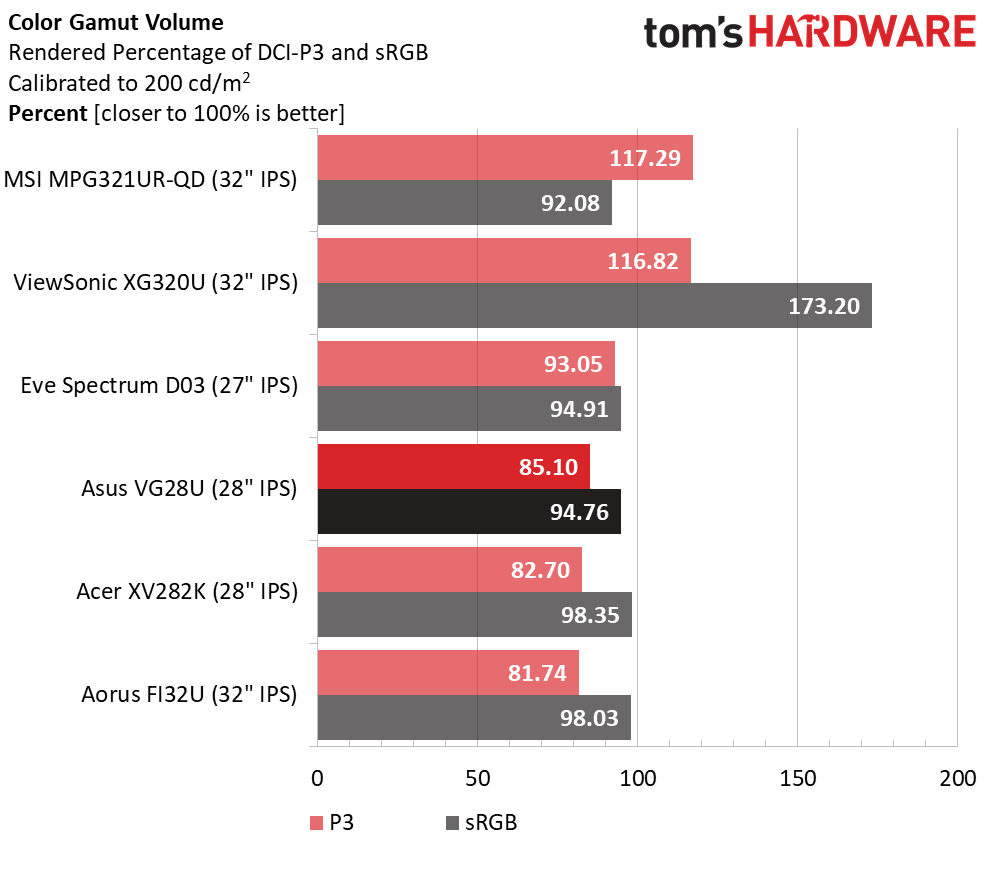

None of the monitors have visible color errors after calibration. The VG28U is in third place by the numbers, but you’ll be hard-pressed to spot any problems here. In a premium display category, this is the way it should be. With a 1.82dE score for sRGB, the VG28U stands out. Most wide gamut monitors aren’t as accurate in sRGB mode.
The VG28U has an average gamut volume score. Anything over 90% is above average, making the ViewSonic and MSI screens extreme over-achievers (in a good way). HDR content is clearly more colorful when shown on the Asus, providing the expected experience for gaming and video. With calibration, it is qualified for color-critical apps in either sRGB or DCI-P3 modes.
Current page: Grayscale, Gamma and Color
Prev Page Brightness and Contrast Next Page HDR Performance
Christian Eberle is a Contributing Editor for Tom's Hardware US. He's a veteran reviewer of A/V equipment, specializing in monitors. Christian began his obsession with tech when he built his first PC in 1991, a 286 running DOS 3.0 at a blazing 12MHz. In 2006, he undertook training from the Imaging Science Foundation in video calibration and testing and thus started a passion for precise imaging that persists to this day. He is also a professional musician with a degree from the New England Conservatory as a classical bassoonist which he used to good effect as a performer with the West Point Army Band from 1987 to 2013. He enjoys watching movies and listening to high-end audio in his custom-built home theater and can be seen riding trails near his home on a race-ready ICE VTX recumbent trike. Christian enjoys the endless summer in Florida where he lives with his wife and Chihuahua and plays with orchestras around the state.
-
peachpuff Reply
Indeed, hdr is junk at that price.ssj3rd said:„Excellent HDR“ with HDR400? Hmmmm
You can’t be serious